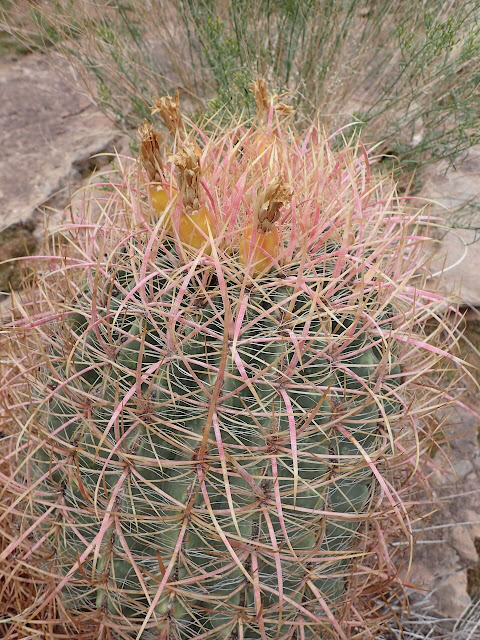Post by Eric“Get back! Get back in the boats!”
I heard the yelling but had no clue what was happening. Our Grand Canyon rafting party was landing at Tuck Up, preparing to camp and then hike up the slot canyon. I had just pulled my inflatable “ducky” kayak onto shore.
A handful of people, already a short way inland, hurried back to the rafts. But what was the danger? I couldn’t see anything of concern. It was unnerving. We were 11 days into our 16-day float trip and had never experienced any alarms calls like that.
I almost launched my ducky, but a few people hovered next to the parked rafts, looking just upstream. I heard the word “flash” several times.
Cautiously, I came forward and saw it: A dark, chocolate-colored flow of water pouring down what had moments before been a dry rocky beach. I glanced to the Colorado River. Tan-colored moments before, it was now almost as dark as the flash floodwaters. Organic debris bobbed in waves.
Corrine and I had heard about flash floods and seen some videos, but we had never experienced one before. It was truly awesome.
When our guides felt comfortable that the flood flow rate seemed fairly stable, we moved to another campsite about a hundred yards downstream. We unloaded the rafts, set up camp, then hiked up to check out the flood. Eventually, we scrambled up onto a wide side ledge and hiked a ways into the canyon safely above the floodwaters.
 |
| Viewing the flash flood from a shelf just above. |
The flood dominated our senses. Besides the visual treat of the turbulent, debris-ridden, dark brown water, a strong earthy smell permeated the canyon. We could hear rocks being tumbled over the stone shelves. The water had a greasy feel. Even our guides were in awe. They had seen flash floods before, but this was a big one. The raw power of the flood was just a hint of how the Grand Canyon had become so grand.
Trip of a Lifetime
 |
| One of our many campsites. |
Corrine and I had talked about a Grand Canyon trip for years, but it had remained talk. Then, in 2019 a patient of Corrine’s spoke glowingly about Canyon Explorations’s 16-day hiker special, so Corrine signed us up for the next available trip in September 2021. My older sister, Janice, signed up, too. But in fall 2021, the Delta Covid strain was surging. Corrine didn’t feel she could leave work. CanEx allowed us to put off our trip for another year, so we did. Janice decided to go and came back raving about the trip, so we were glad to finally go this year.
All tour guests met at a hotel in Flagstaff, Arizona, and the next day took a bus to the put-in at Lee’s Ferry. The trip had 24 guests, more than the 16 we were expecting, but the dynamics worked out fine. (The National Park Service has allowed tour companies to overbook to make up for the lost COVID tours.)
Brown But Welcoming Waters
 |
| At the Lee's Ferry put-in, we had nice clear water, but that didn't last for long. |
We got to experience many wonderful things on our float trip, but clear water wasn’t one of them. We did see it briefly at the start, but one of the Colorado’s tributaries, the Paria River, was flooding. About a mile from our start, the dark brown water created big “sand” waves at the confluence, caused by undulating sand on the river bottom. Corrine and I, starting the trip in the 7-person paddle boat, had a blast riding the waves.
A few days later we reached the Little Colorado River, where trips often stop so the guests can play in the clear water. But the LCR was running brown with flood waters, the result of heavy rains at the tail end of monsoon season. While we missed out on the clear waters, we benefited as well. Due to the rain, canyon plant life was far greener than normal for that time of year. The water was also far warmer than normal. Historically, the water has been so cold people stay in for only a few seconds at a time voluntarily. But warming river water is an ongoing trend. It’s not great for some river plant and animal life, but it made life easier on us. We enjoyed the warmth when swimming and bathing in the silty water. (Clean quickly became a relative term.)
 |
| Bathing at the end of the day in warm water. |
 |
Notice how green the slopes are above the water. The guides had never seen it
this green this time of year. |
Camp Life - More than Just Groovin'
 |
| VK explains how the "groover" works. |
On our second night, trip leader Mathieu (pronounced Matthew), showed us how to wipe our butts with a single square of toilet paper. We all chuckled nervously. This was a joke, right?!
It was…sort of. Mathieu was humorously introducing a problem: we were dangerously low on toilet paper. Mathieu had mistakenly forgotten to pack TP for the whole 16 days. Fortunately, we were rescued from the single square method by two CanEx employees who hiked in more TP on our third night.
That aspect of river life is “interesting.” In the past, boaters did all their business on shore, digging catholes for poop, but as use of the limited campsites became more intensive, that became unworkable. Now urine goes directly in the river, either from pee bottles or buckets, or just by peeing in the river. (“The solution to pollution is dilution.”) For number 2, you pack it out. Groups use “groovers,” rectangular waterproof military ammo cans with a toilet seat placed on top. (At first, the cans had no toilet seats, hence the name. People got grooves in their skin from sitting on the edges of the cans.) By the end of the trip, we had filled nine groovers.
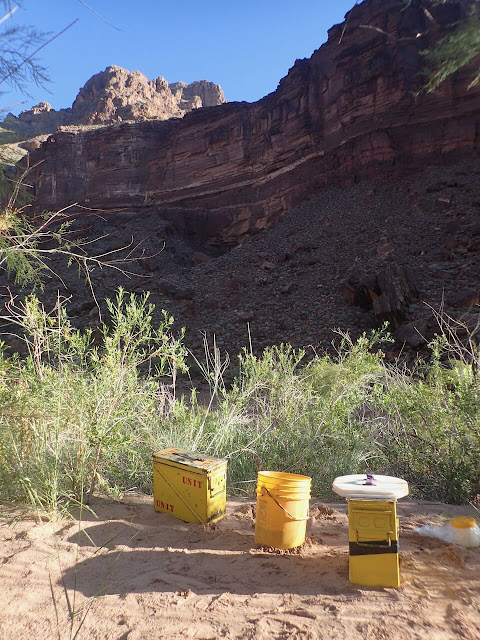 |
| The view from the "groover" was usually quite nice. |
With help from our seven guides, we quickly got used to camp life. When we arrived at a campsite (which were mostly some form of vegetated sandy area), everyone helped unload the boats, then the guides set up the kitchen and groover while the guests found camping sites. Everyone had tents available, but many people slept out in the open, putting their pads and sleeping pads atop tarps (all provided by CanEx). Corrine and I spent only two nights in a tent, when we thought it might rain. Both times we could have done without it.
 |
| We usually created a chain to load and unload our bags and other gear. |
 |
| A typical camp set-up. Some tents, some just pads and sleeping bags on tarps. |
Once campsites were set up, guests could relax while the guides prepared food on several foldout tables. One blow on a conch shell announced that hors d'oeuvres were ready. Drinks (bought pre-trip by the guests and cooled by river water) were available. We would read, visit, explore, nap, or otherwise relax before another conch call announced dinner. The meals were incredibly good. Amazingly, we had fresh fruit and veggies (even avocados) through the last day! Hats off to Orea, the lead cook, and to coolers and cool(ish) river water.
 |
Camp circle for meals and pre-meal relaxing and socializing.
|
 |
| Our crew prepping a lunch for us. |
Before meals, everyone had to wash their hands. People would line up at a five-gallon bucket “sink” operated by a foot pump. Norovirus can be a problem on river trips, but our group was careful about hygiene and, luckily, we had no problems. Another “sink” was stationed near the groover for post-grooving.
 |
| Lining up for a pre-meal wash up. |
Everyone pitched in for the post-dinner clean up and then it was time for more relaxing. Either at dinner or just after, Mathieu led a discussion that usually revolved around reflection of the day’s events. Breakfasts were run similarly with the first conch call being for coffee and tea and Mathieu’s talks focusing on what was planned for the day ahead.
Hikes of History - Natural and Human
 |
The Nankoweap granaries, the goal of one of our hikes, were built by
ancestral Puebloans about a thousand years ago. |
When Cricket, one of our guides, yelped with joy on a hike up North Canyon, we all hurried over. Swimming in a creek pool were several triops, small crustaceans slightly reminiscent of horseshoe crabs. More were in the next pool. One was creating a nest for its eggs. They seemed otherworldly in this desert environment.
At the hike start, Cricket told us to look for the creatures. They are known to inhabit the canyon’s pools and Cricket said she had seen them just once, on an earlier trip this season. Their eggs, which can lay dormant for years, hatch only when the water conditions are just right. We were incredibly lucky to be in the right place at the right time.
.jpeg) |
| A triops digging a nest. |
Hikes of varying lengths and difficult were a big part of our trip. Almost every day featured one. They each offered something different: hidden grottos in slot canyons; waterfall “showers” to play in; ancient Native American granaries, dwelling ruins, and pictographs; caves with bat roosts; an abandoned dam shaft; remnants of previous “modern” human river runners; plants originally cultivated by Natives; a concert in a canyon with beautiful acoustics; a long, hot hike to Nankoweap Butte with a gorgeous 360-degree view.
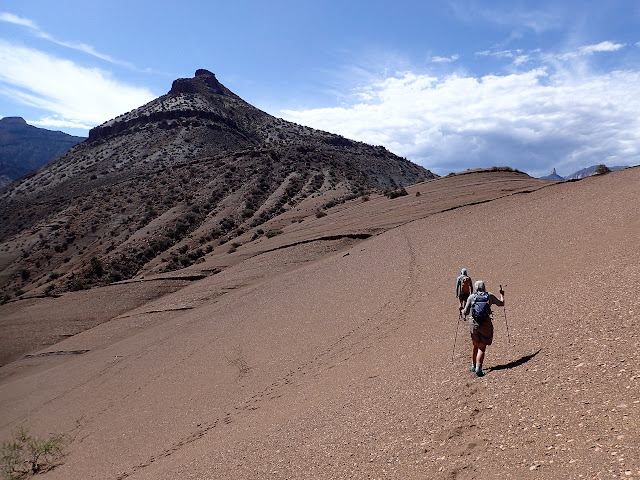 |
| Hiking toward Nankoweap Butte. |
We did only one really long hike. Another planned long hike was cut short by the flash flood at Tuck Up Canyon. We didn’t mind, though. We did a smaller hike up that canyon when the waters receded, awed by the raw power of the flood that had just happened. And we got to see a juvenile California condor at the start. The sighting was rare especially because the wild-born condor had not been tagged by researchers who keep close watch on the species, which almost became extinct in the 1980s.
 |
| Hiking up Tuck Up after the flood waters had receded. |
Hikes were all guide-led and included talks about natural or human history or readings from books. We often discussed the ancient layers of rock we were passing through, some almost two billion years old. Processes that created the canyon were another frequent topic, including several of the theories of how the Colorado River cut through so much shifting rock.
 |
| The Patio - a lush oasis in the desert - up Deer Creek Canyon. |
 |
| Cricket reads from a book during a hike up North Canyon. |
Excitement of Rapids
 |
| We watch a raft from another group take on Lava Falls Rapid. |
The wave slammed into the right side of the paddle raft, throwing me into Heidi, who sat on the left side. Well, I would have slammed into Heidi, had she been there. I knew I was going into the river, so I started to grab for the perimeter line, which runs all along the outside of every raft. Normally, grabbing that line while in the paddle raft is a big no-no. (Hang on to your paddle with both hands!) Paddling is the best way to stay in the boat and help the team. But once in the water, it’s fine to grab the P-line.
I started to grab for the line since the raft was flipping, and everyone was going to swim. Then the raft righted itself. Stunned but alert, I grabbed my paddle with both hands and jumped back to my side of the raft. Then it dawned on me that I hadn’t run into Heidi. She was gone, catapulted from the boat by the massive wave. Someone needed to take her place at front left, a key position, kind of like first mate. Front left leads the team’s paddle strokes. I jumped to the front left position and started following Cricket’s commands. Fortunately, Corrine and the others were still in the raft.
I couldn’t see what was happening but later was told Cricket tried to rescue Heidi. While reaching for Cricket’s paddle, Heidi saw her cap surface right in front of her. Automatically, Heidi grabbed the cap instead! We all laughed about that afterward, but in the moment the rescue opportunity was lost.
Heidi washed into an eddy and climbed onto a shelf on the canyon’s rock wall. We spun out of that eddy and downstream around the corner. We eddied out, but Heidi was out of sight in the upriver eddy. Now we had to go back and get her.
Horn Rapid is one of the bigger ones in the Grand Canyon. We had already gone through several tough rapids successfully, but one out-of-rhythm paddle was all it took for us to get slammed in Horn. We quickly regrouped. Cricket rebalanced the raft, sending me back to front right and putting Lisa at front left.
We paddled to the other side of the river, then paddled up an eddy toward Garrison’s oar boat. He could see Heidi but couldn’t cross the river to her. As we approached Garrison’s boat, we finally saw Heidi standing on a narrow ledge just above waterline. She was smiling, still holding her paddle!
Cricket set us up, then we ferried across the tail end of the rapids, paddling as hard as we could to fight the strong current. (“All forward! All forward!”). We made it, but the eddy was not calm. We spun a couple of times before Cricket could set us up for the rescue. (“Left back! Right forward! Stop!”) We were elated when Heidi jumped in but had to stay focused to get out of the eddy and the rapids. (“Right forward! Stop! All forward!”) The other rafts cheered in relief when we appeared with Heidi.
 |
Heidi is right front in this photo (Left front when heading downstream).
This was on a day when we had an all-female crew in the paddle boat. |
Corrine and I experienced rapids in all the boats, including the dory, which can rock like a rocking chair on steroids, but we were mostly in the paddle boat. Corrine was Cricket’s most constant team member -- 12 of the 16 days.
I did fewer days in the paddle boat mostly because I also spent about four days in one of the two inflatable, one-person “ducky” kayaks. I loved the challenge of tackling the waves in the little boat. I swam on my first day but was able to self-rescue. The more I handled the ducky, the better I got. I even surprised Cricket when I successfully ran Upset Rapid, a class 7-8 rapid. Then I got cocky and swam when I tried to take an aggressive line in Mile 209 Rapid (class 7).
(In the following video, the paddle boat is followed by me in a ducky through a fairly large rapid. I managed to stay upright through the entire rapid!)
The dory and bigger oar rafts were fun, but for the most part you are a passive passenger unless you need to do a high side or your guide falls out (which happened to one raft at Lava). The guides are excellent boatmen and rarely needed much help. But in the paddle raft everyone needs to participate and do it well.
 |
The dory dives into a wave!
|
 |
| Then comes shooting out! |
Corrine and I enjoyed taking an active part in the rapids, and Cricket liked how we performed, so she selected us to be in the paddle raft for Lava, one of the most celebrated rapids in Grand Canyon. Lava was a blast, and we ran it like a well-oiled team. Heidi, still shaken by her swim in Horn, took the front left position through Lava and performed like a champ. We all gave a big cheer and paddle high-five when we made it through.
 |
| Cricket is ready to lead us through Lava Falls in her stars and stripes outfit! |
 |
| Corrine in one of the duckies. |
Weather - Warm and Only a Bit Wet
We stood in camp staring upriver at the rumbling dark clouds, red canyon walls, and rainbow. The sight was already gorgeous when a bolt of lightning flashed between a cloud and the canyon rim. Fabulous!
In camp, several people watched or held up cameras or iPhones, waiting for one more bolt of lightning. Crack! Another one! A few seconds later the boom rolled in. For about a half hour, we watched the storm work its way downriver along the rim. Several people got photos framing the rainbow, the canyon, and a bolt of lightning. (Thanks largely to iPhone-savvy Bart, one of the guests.)
 |
| Everybody watching the dramatic skies. |
The clouds sprinkled a bit that afternoon, enough for the crew to pitch a tarp over the kitchen area despite having to fight a stiff wind. The tarp was needed. We had a longer rain shower during dinner. Most of the guests huddled under the tarp, eating and listening to Mathieu’s talk. Then the rain stopped and eventually the skies cleared. That was the worst of the rain on our trip. We had a few other rain showers but mostly we had clear skies or just a few clouds.
The temperatures during our trip were hot by Fairbanks standards but reasonable for the Grand Canyon. (It can get above 120F in the summer!) Our days were in the 80s and 90s with nights cooling a bit but staying mostly in the 70s or 80s. I started all my nights atop my sleeping bag, working my way inside only after the air temps cooled. Sleeping almost outside every night without a tent meant we got to watch the starry skies without freezing, truly a treat for Fairbanksans. We even got to see several meteors!
(A waterfall shower is a good way to cool off on a hot day. We had several opportunities to do this. Corrine and I took advantage of all opportunities.)
Animal and Plant Life
 |
| A scorpion glowing in the UV flashlight beam. |
I swept my flashlight beam across the ground, then froze, staring at the glowing creature. It crawled over the rock, an alien from a science fiction movie. I moved on, finding another, then another.
I went scorpion hunting almost every night before bed. Scorpions are well camouflaged, but they glow in UV light. I found that out before we left, so I got a UV flashlight. Seeing them glow was a bit creepy and thoroughly fascinating. One night I found just three. On my big night I found 15!
People had mixed reactions about my nightly hunts, but several were curious enough to join me on the last night. I found 12 scorpions on that hunt. (And was recruited to check three campsites, resulting in one evicted scorpion and several relieved campers.)
At first, animal life seemed rare on the trip, but with time and patience we started seeing more. Insects were most prevalent, from tiny ants to biting flies to the scorpions. Bird life also became more common. Great blue herons were seen most days, as well as ducks, crows, and ravens. We saw occasional other birds including hummingbirds, hawks, kingfishers, and, on one hike, white-throated swifts. Canyon wrens were occasionally seen but more often heard, with their descending, plaintive call.
 |
| A garter snake slithers between Cricket's legs before heading into the brush. |
We saw reptiles and amphibians often. Lizards were particularly common, toads and frogs a little less prevalent, and only a couple of snakes. Bats often fluttered above our camps at night. Nocturnal skunks were spotted twice in or near our camp. Fortunately, no one was sprayed. Corrine and I saw several desert bighorn sheep and one beaver. (River flooding discourages dams and lodges, so beavers use shoreline burrows). I saw one mule deer. And Heidi woke one night to see a ringtail, a nocturnal mammal related to raccoons!
Plant life was also resplendent. The ocotillos and other plants greened up the canyon walls and we got to see quite a few flowers. They really added color to the trip.
A Great Crew
 |
| VK and Garrison ham it up for the camera during breakfast. |
On our last night, as he had done every night at dinner, Mathieu once again called out “How about that dinner crew?!” But instead of the normal cheer, he was met by dead silence. After a stunned moment, Mathieu cried out “Oh my God!” He knew he had been pranked. We all howled with laughter.
Practical jokes, music, and games were part of the genial teamwork of our crew. While the guides had clearly defined duties, they mixed easily with the guests. We played jokes on each other, dressed up on a couple of special occasions, played a game of Ultimate Frisbee in Redwall Cavern, had an awesome water fight on the river, and encouraged each other to jump into the river off a 15-foot ledge at Pumpkin Spring.
 |
| Mathieu leading the way, jumping off a cliff at Pumpkin Springs. |
 |
| Yoni smiles when he realizes he has been pranked. We loaded way too many bags on his raft. |
Cricket serenaded us with her guitar and told river stories. Garrison played word games (including a paper version of Wordle) and read poetry. Austin gave star talks and clowned around. VK showed us photos of the murals he paints in winter. Yoni, a rookie Grand Canyon guide, pondered life as a river guide. Orea, with 30 years’ experience, told us tales of South America and other rivers. And Mathieu, the trip leader, shared much of his extensive knowledge of the river’s natural and human history, as well as his own adventures in the canyon. Some of our guides joined with others a couple of times to give us concerts in the canyon.
I knew a bit about the Grand Canyon but sometimes felt overwhelmed by all there was to learn. Every guide had something to add. To say the area is rich in lore is an understatement. The guides also share a passion for preserving the river and canyon. They told us a lot about the existing Colorado River dams and defeated plans to build more. At times their passion seemed religious, with the canyon and river being their house of worship. But often they let the natural space around us do its own talking. I often felt in awe of our surroundings. While in calm water when paddling the ducky, I often laid back, stared up at the canyon and let the river point me wherever it wanted. I just soaked it in.
Everything Has to End
 |
| Diamond Peak marked the nearing of the end of our trip. |
Eventually, the last day came. After dinner on the last night, we shared whatever was in our minds about the trip. Many felt powerfully moved by the canyon, river, and our tripmates. The whole experience seemed so different from our regular day-to-day lives. Just before the takeout at Diamond Creek, we floated a quiet section of river, lost in our own thoughts. A nice treat before the hustle-bustle of unpacking and derigging the boats, along with other tours.
 |
| The whole group - minus Texas Dave and Wendy - at the take out. |
Later that evening, we got together in the hotel lobby to say goodbye. It seemed amazing that just 16 days before most of us didn’t know each other. Now it felt like we were saying goodbye to old friends. The canyon and river had provided us with an intense intimacy found in few other places. We ate together, worked together, played together, slept together, and even got used to giving people privacy simply by looking the other way. And always, the canyon and river provided a backdrop for our thoughts.
It’s impossible to say how the experience will affect everyone. I certainly hope it will encourage some of us to fight for special places like the Grand Canyon where we can step outside of our busy, human-fabricated lives and remember what it’s like to simply be for a while.
To find out more about Canyon Explorations see here.
For a list of nonprofit groups dedicated to the promotion and preservation of the Grand Canyon see here.
 |
| A leafing ocotillo. |





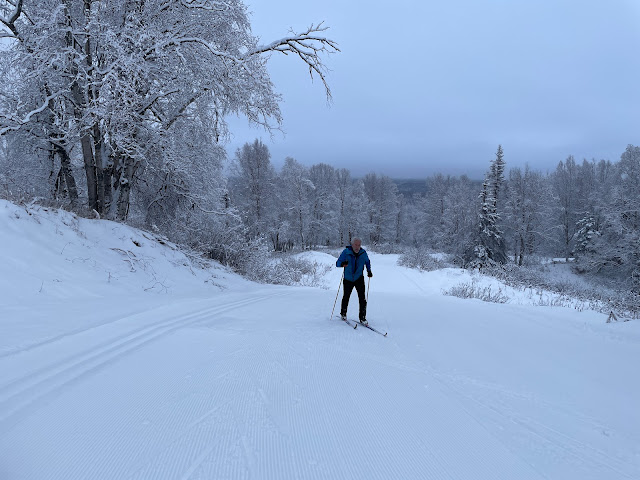





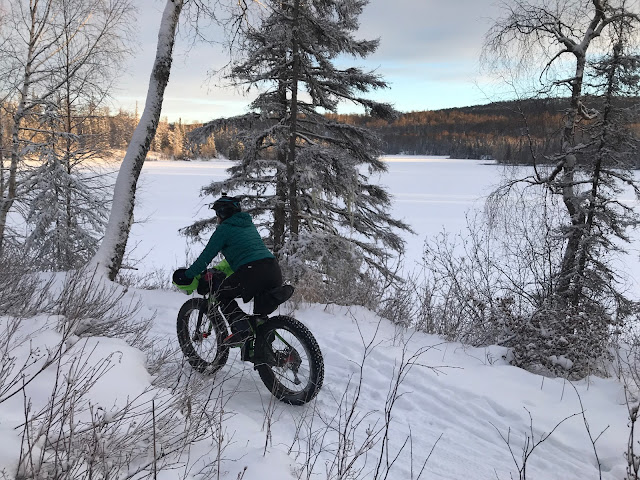













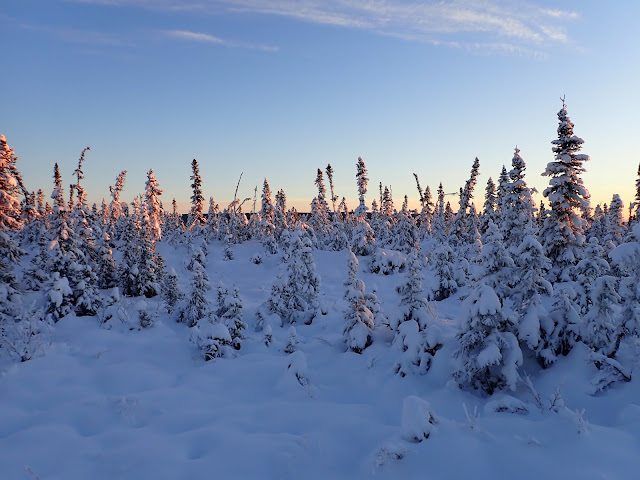









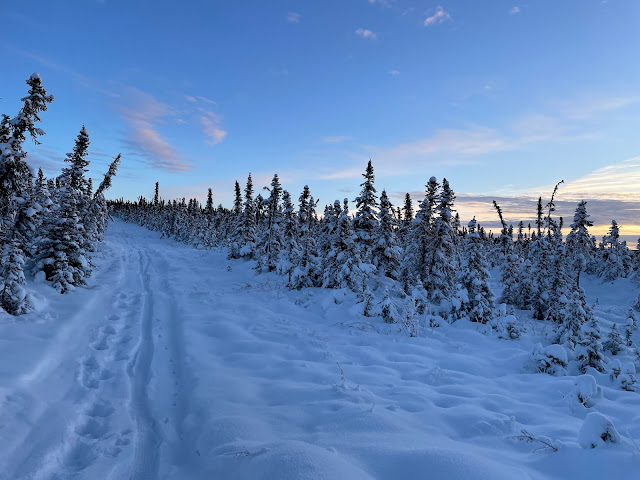




















.jpeg)
















